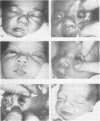Abstract
In a selected group of 103 babies referred with neonatal conjunctivitis Neisseria gonorrhoeae was isolated from 11 and Chlamydia trachomatis from 33. Concurrent infection was present in three. On toddler sibling developed chlamydial conjunctivitis. After treatment C. trachomatis was re-isolated from six babies during the follow-up period. The discharge started one to three days after delivery in only three babies with gonococcal conjunctivitis and at five to eight days in eight babies. One baby was delivered by caesarean section. N. gonorrhoeae was isolated from four asymptomatic fathers, all of whom had urethritis. The mean onset of discharge in the 33 babies from whom Chlamydia was isolated was 7-1 days. One baby was delivered by caesarean section. Chlamydial conjunctivitis was associated with a high incidence of prematurity and of postpartum infection in the mother. Ten fathers of Chlamydia-positive babies were examined. C. tachomatis was isolated from four, all of whom were asymptomatic but had low-grade urethritis. These findings confirm the pathogenic role of C. trachomatis in the cervix and indicate the importance to the family of an adequate microbiological investigation of neonatal conjunctivitis.
Full text
PDF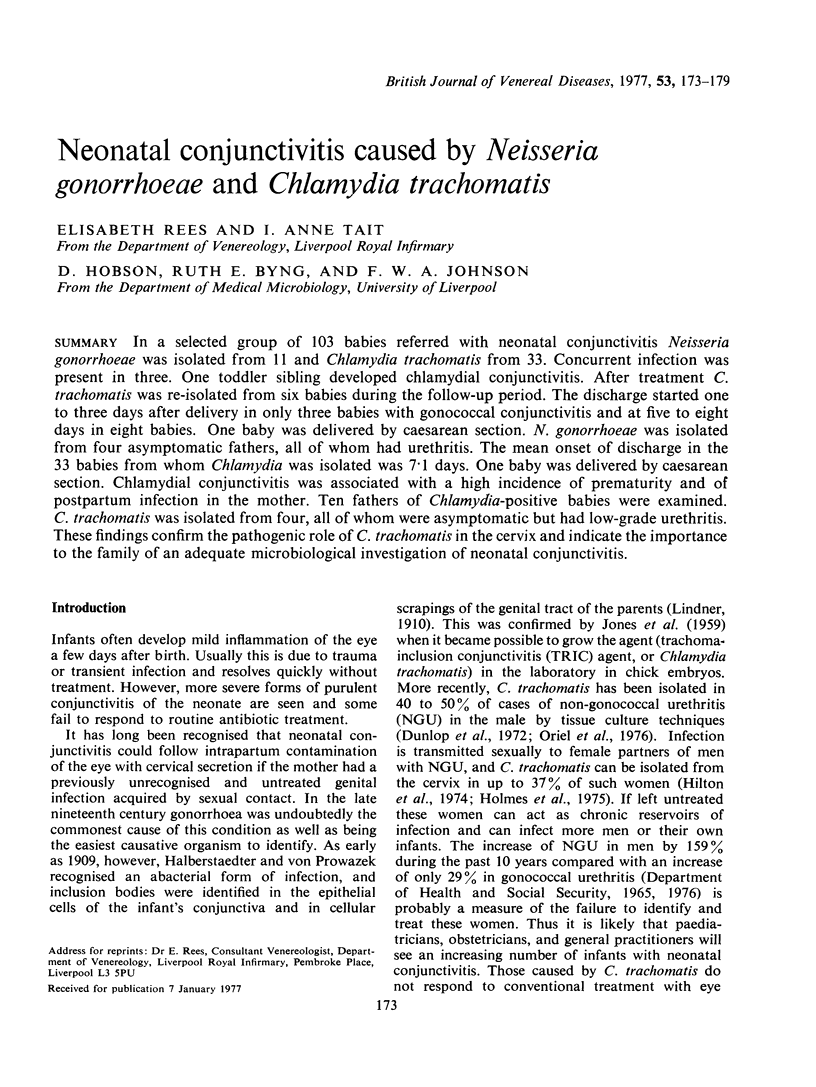
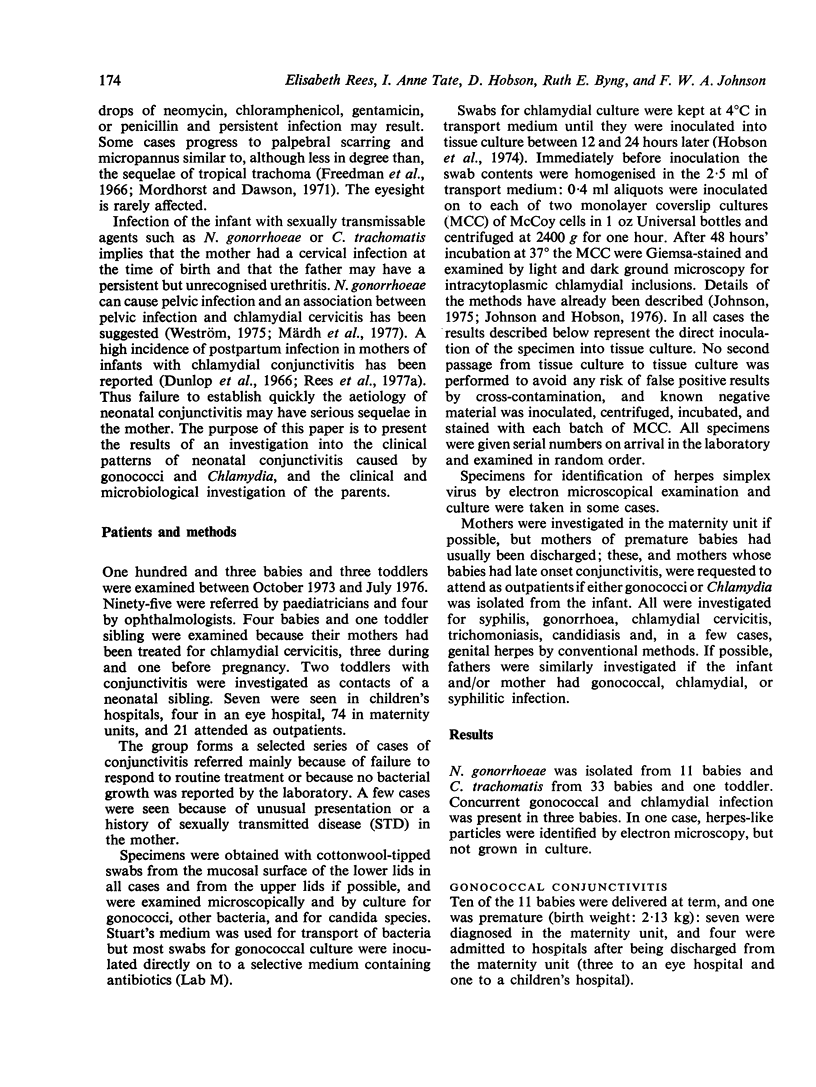
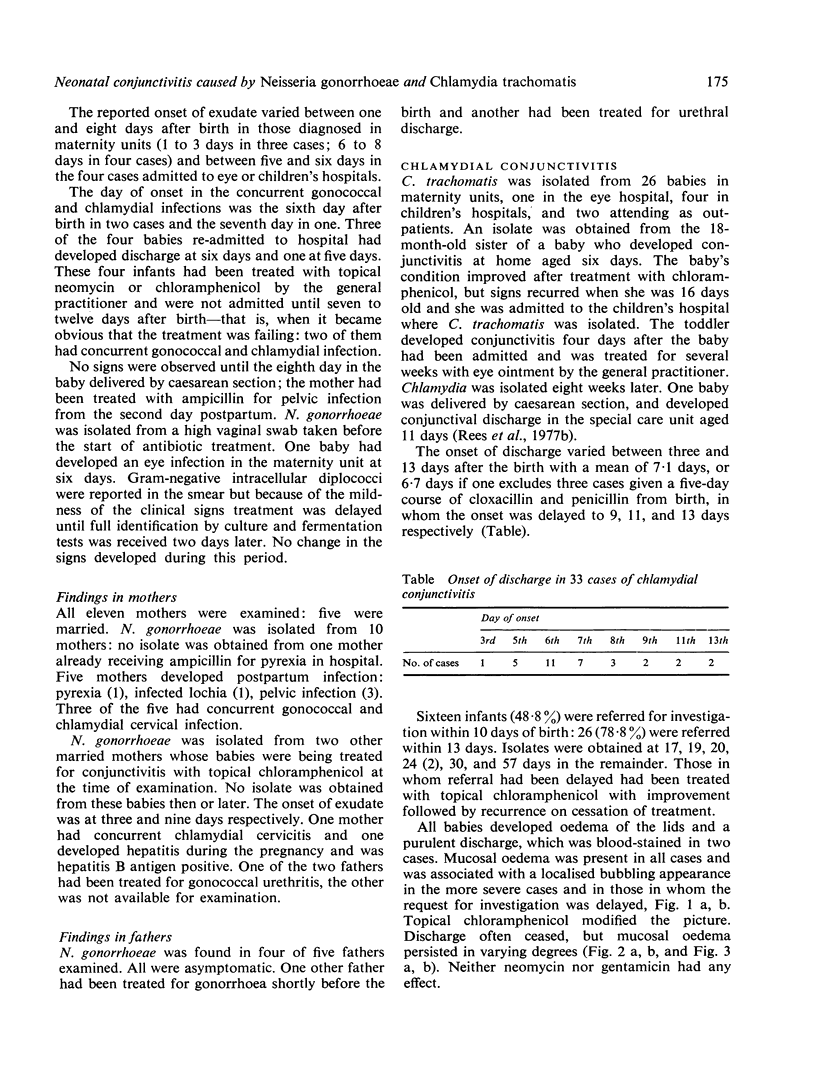
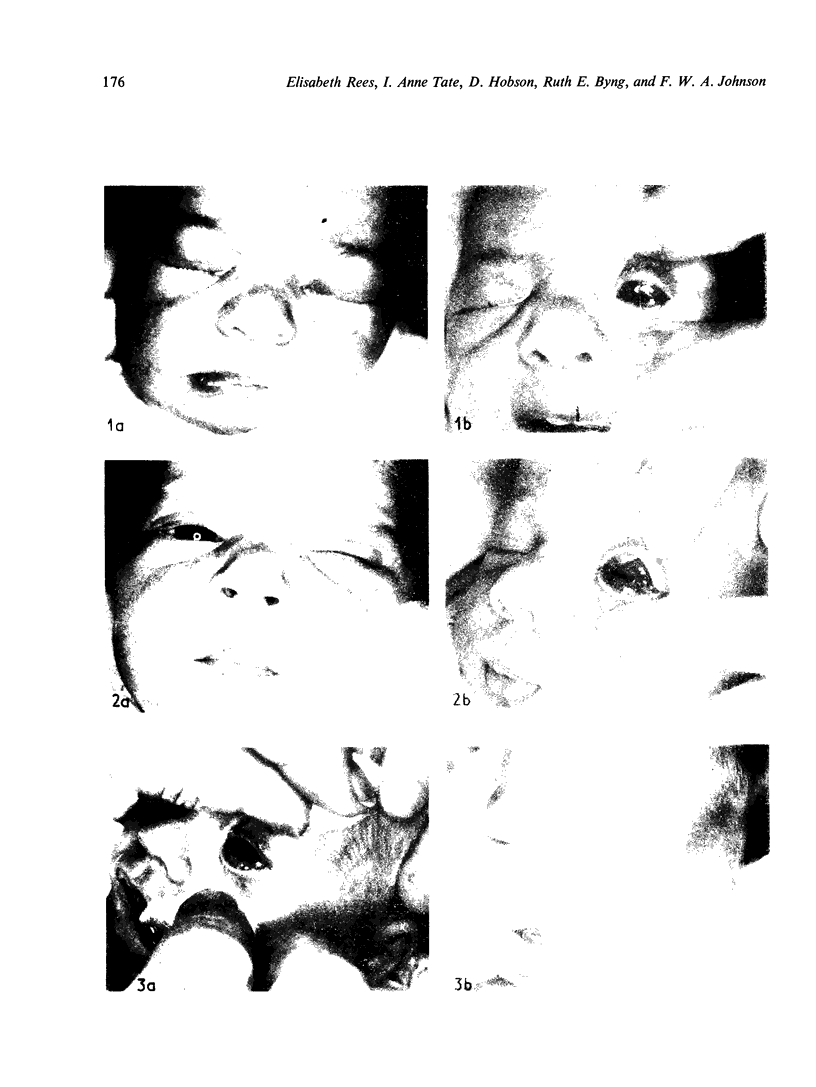
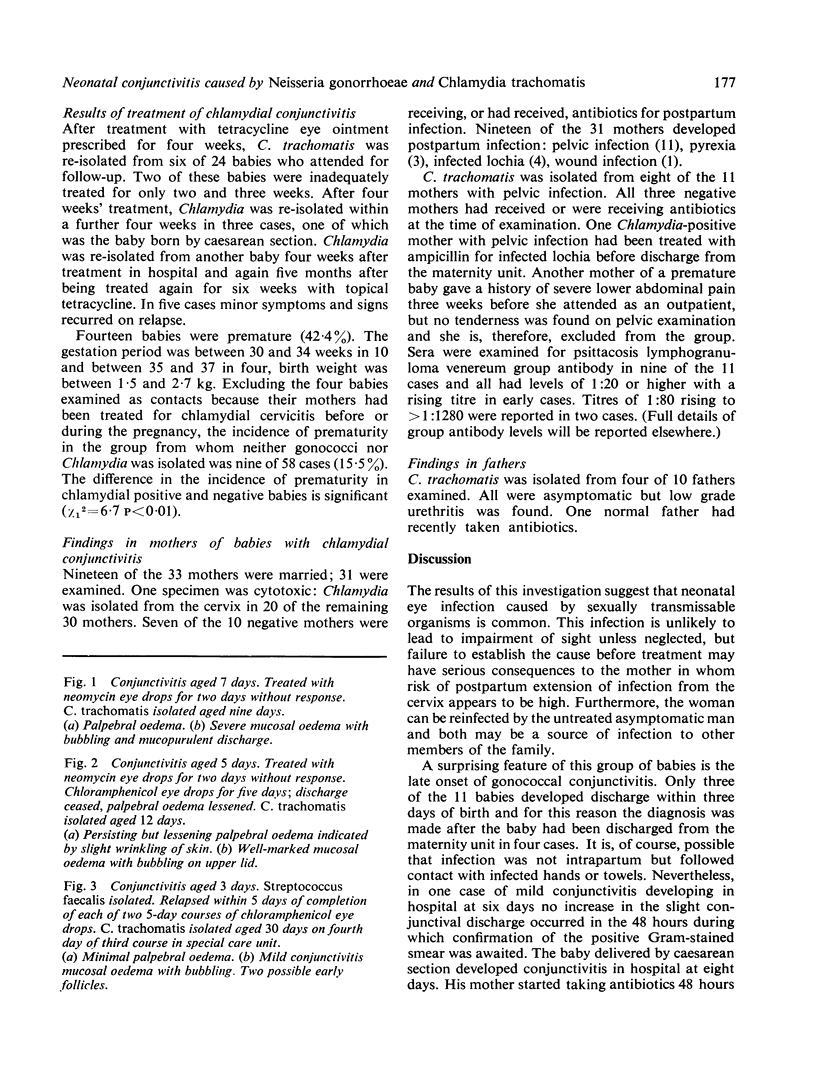
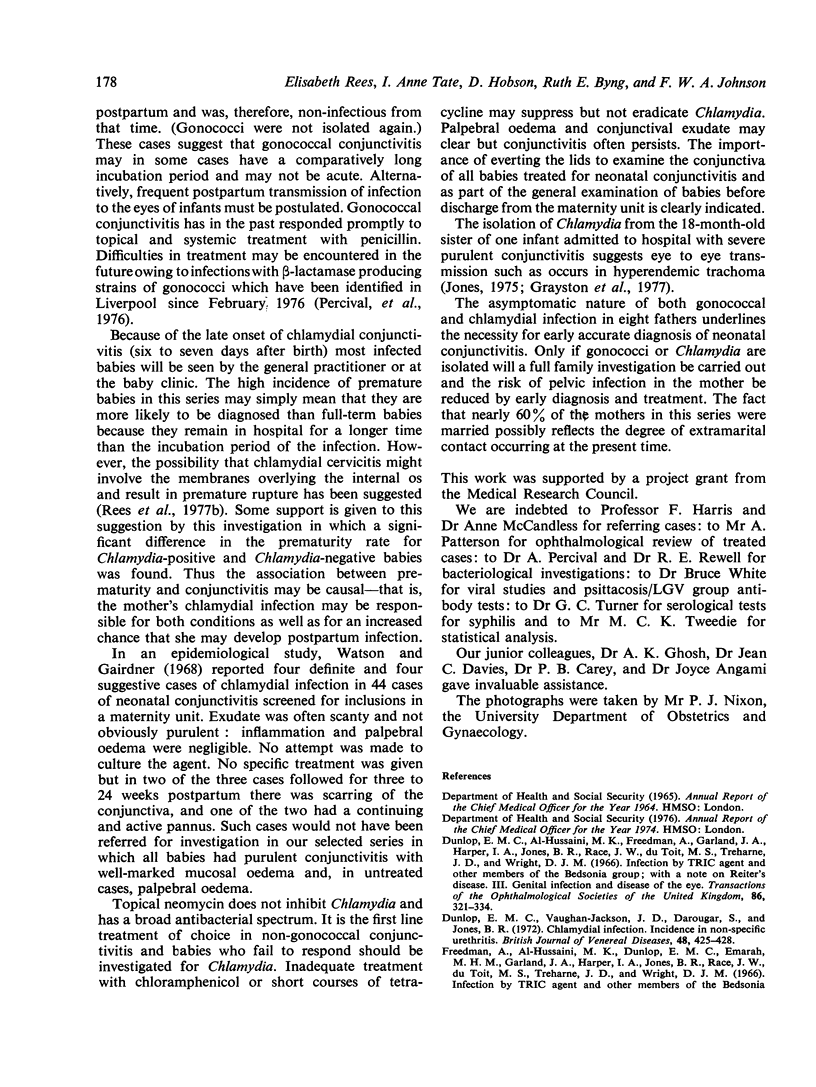
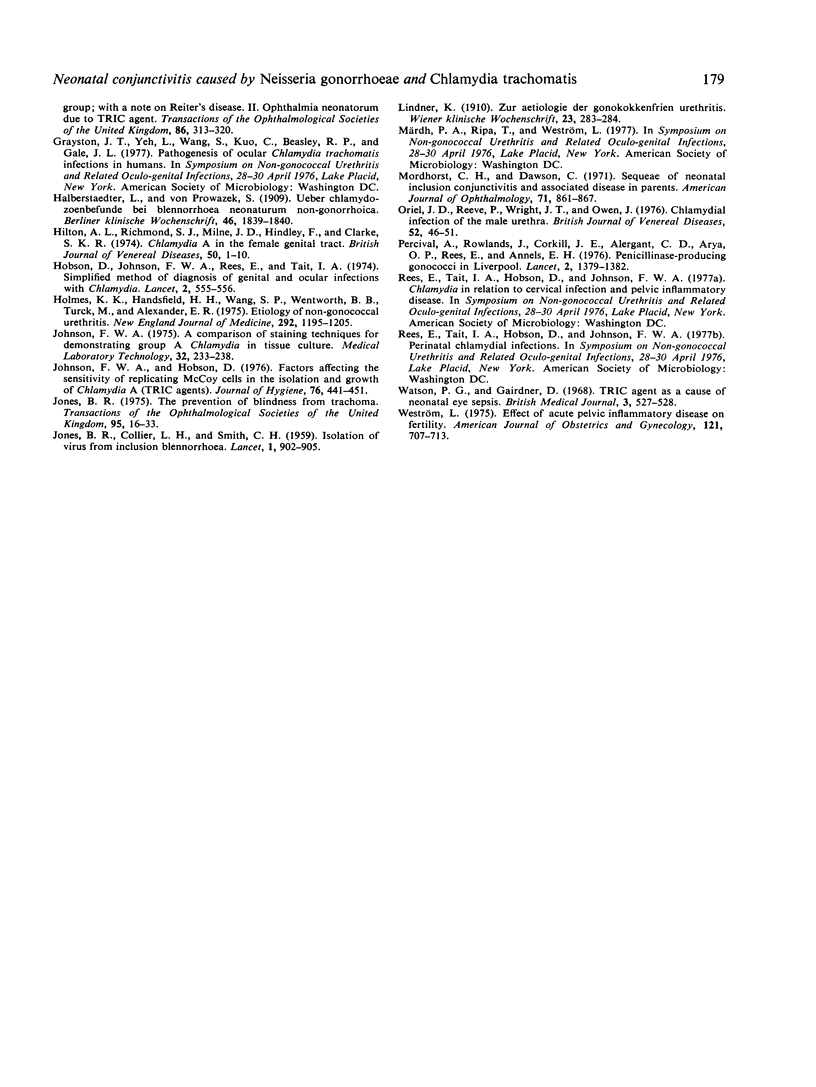
Images in this article
Selected References
These references are in PubMed. This may not be the complete list of references from this article.
- Dunlop E. M., Vaughan-Jackson J. D., Darougar S., Jones B. R. Chlamydial infection. Incidence in 'non-specific' urethritis. Br J Vener Dis. 1972 Dec;48(6):425–428. doi: 10.1136/sti.48.6.425. [DOI] [PMC free article] [PubMed] [Google Scholar]
- Dunlop E. M., al-Hussaini M. K., Freedman A., Garland J. A., Harper I. A., Jones B. R., Race J. W., Du Toit M. S., Treharne J. D., Wright D. J. Infection by TRIC agent and other members of the Bedsonia group; with a note on Reiter's disease. 3. Genital infection and disease of the eye. Trans Ophthalmol Soc U K. 1966;86:321–334. [PubMed] [Google Scholar]
- Freedman A., al-Hussaini M. K., Dunlop M. C., Emarah M. H., Garland J. A., Harper I. A., Jones B. R., Race J. W., Du Toit M. S., Treharne J. D. Infection by TRIC agent and other members of the Bedsonia group; with a note on Reiter's disease. II. Ophthalmia neonatorum due to TRIC agent. Trans Ophthalmol Soc U K. 1966;86:313–320. [PubMed] [Google Scholar]
- Hilton A. L., Richmond S. J., Milne J. D., Hindley F., Clarke S. K. Chlamydia A in the female genital tract. Br J Vener Dis. 1974 Feb;50(1):1–10. doi: 10.1136/sti.50.1.1. [DOI] [PMC free article] [PubMed] [Google Scholar]
- Hobson D., Johnson F. W., Rees E., Tait I. A. Simplified method for diagnosis of genital and ocular infections with Chlamydia. Lancet. 1974 Sep 7;2(7880):555–556. doi: 10.1016/s0140-6736(74)91879-0. [DOI] [PubMed] [Google Scholar]
- Holmes K. K., Handsfield H. H., Wang S. P., Wentworth B. B., Turck M., Anderson J. B., Alexander E. R. Etiology of nongonococcal urethritis. N Engl J Med. 1975 Jun 5;292(23):1199–1205. doi: 10.1056/NEJM197506052922301. [DOI] [PubMed] [Google Scholar]
- JONES B. R., COLLIER L. H., SMITH C. H. Isolation of virus from inclusion blennorrhoea. Lancet. 1959 May 2;1(7079):902–905. doi: 10.1016/s0140-6736(59)91307-8. [DOI] [PubMed] [Google Scholar]
- Johnson F. W. A comparison of staining techniques for demonstrating group A chlamydia in tissue culture. Med Lab Technol. 1975 Jul;32(3):233–238. [PubMed] [Google Scholar]
- Johnson F. W., Hobson D. Factors affecting the sensitivity of replicating McCoy cells in the isolation and growth of chlamydia A (TRIC agents). J Hyg (Lond) 1976 Jun;76(3):441–451. doi: 10.1017/s0022172400055376. [DOI] [PMC free article] [PubMed] [Google Scholar]
- Jones B. R. The prevention of blindness from trachoma. Trans Ophthalmol Soc U K. 1975 Apr;95(1):16–33. [PubMed] [Google Scholar]
- Mordhorst C. H., Dawson C. Sequelae of neonatal inclusion conjunctivitis and associated disease in parents. Am J Ophthalmol. 1971 Apr;71(4):861–867. doi: 10.1016/0002-9394(71)90256-x. [DOI] [PubMed] [Google Scholar]
- Oriel J. D., Reeve P., Wright J. T., Owen J. Chlamydial infection of the male urethra. Br J Vener Dis. 1976 Feb;52(1):46–51. doi: 10.1136/sti.52.1.46. [DOI] [PMC free article] [PubMed] [Google Scholar]
- Percival A., Rowlands J., Corkill J. E., Alergant C. D., Arya O. P., Rees E., Annels E. H. Penicillinase-producing Gonococci in Liverpool. Lancet. 1976 Dec 25;2(8000):1379–1382. doi: 10.1016/s0140-6736(76)91919-x. [DOI] [PubMed] [Google Scholar]
- Watson P. G., Gairdner D. TRIC agent as a cause of neonatal eye sepsis. Br Med J. 1968 Aug 31;3(5617):527–528. doi: 10.1136/bmj.3.5617.524-a. [DOI] [PMC free article] [PubMed] [Google Scholar]
- Weström L. Effect of acute pelvic inflammatory disease on fertility. Am J Obstet Gynecol. 1975 Mar 1;121(5):707–713. doi: 10.1016/0002-9378(75)90477-9. [DOI] [PubMed] [Google Scholar]



